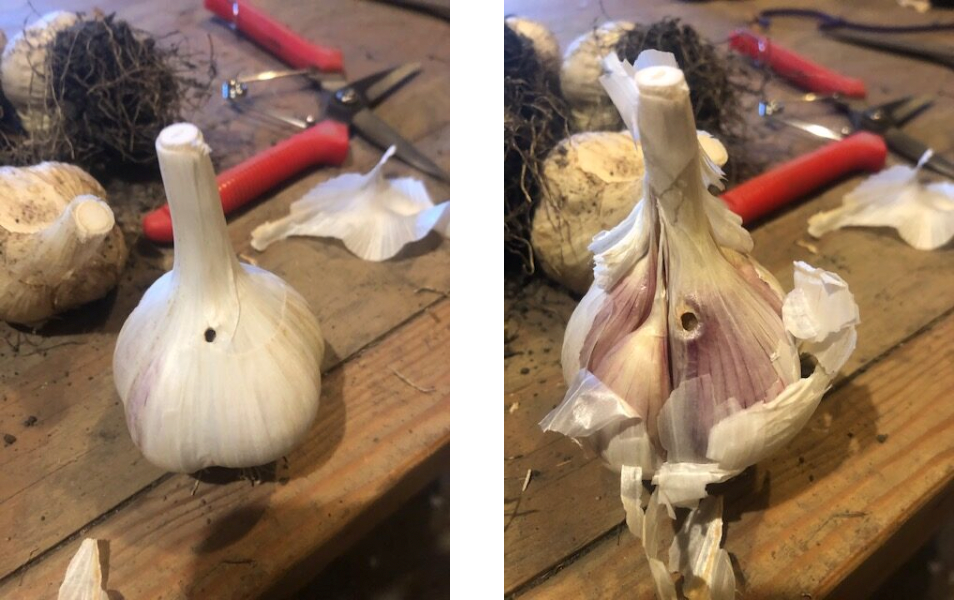Waxy Breakdown: even though it sounds like a great name for a bluegrass band, waxy breakdown showed up in at least one garlic crop in MN and one in MI in 2020. It is a "physiological condition, not one due to infection by microorganisms." Cloves can shrink and turn yellow inside the bulb - they get waxy - sometimes becoming hard, and other times becoming pasty or gelatinous. There is no proven cause, though it's possible that high temperatures during the growing season or while curing can cause it.


